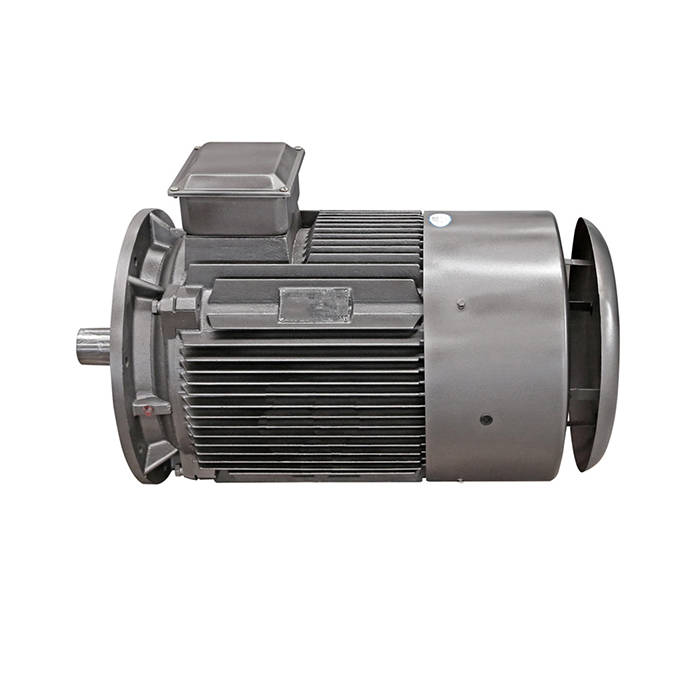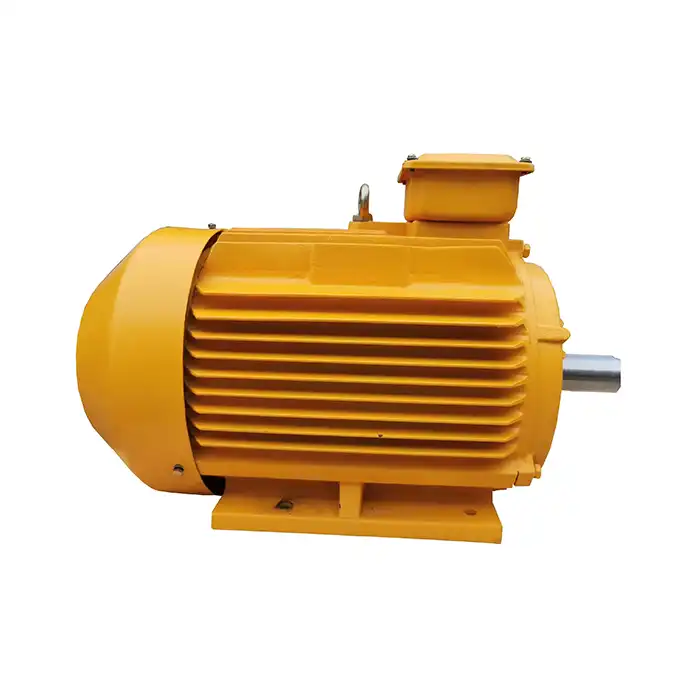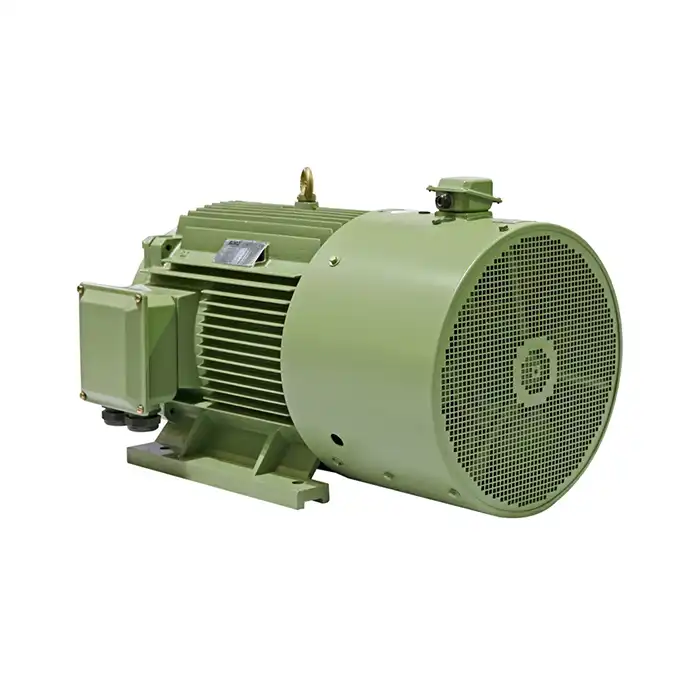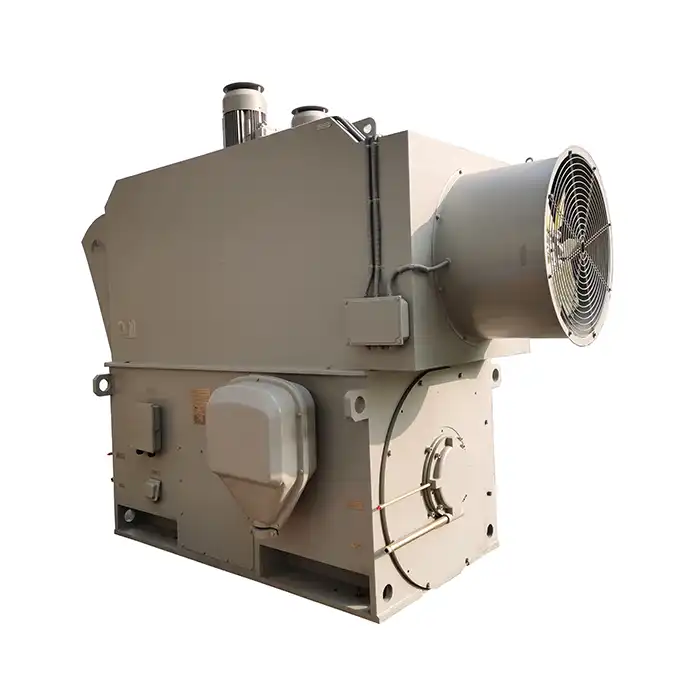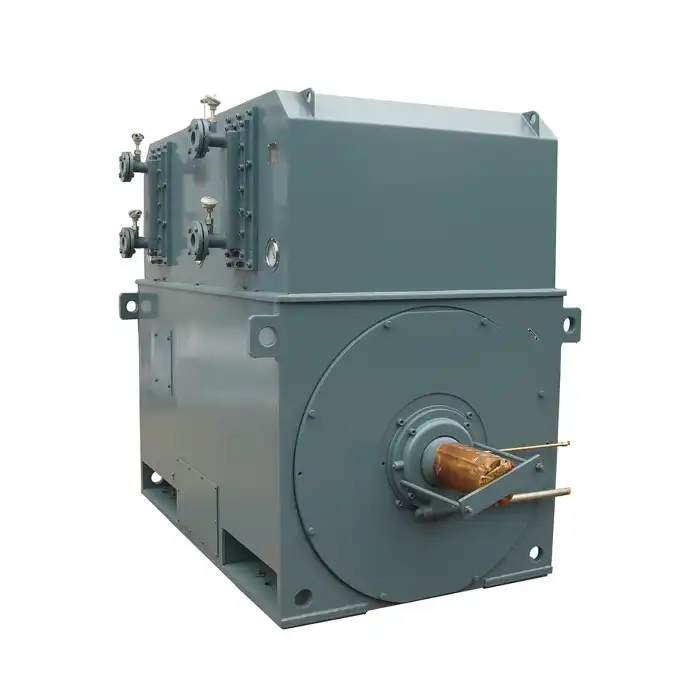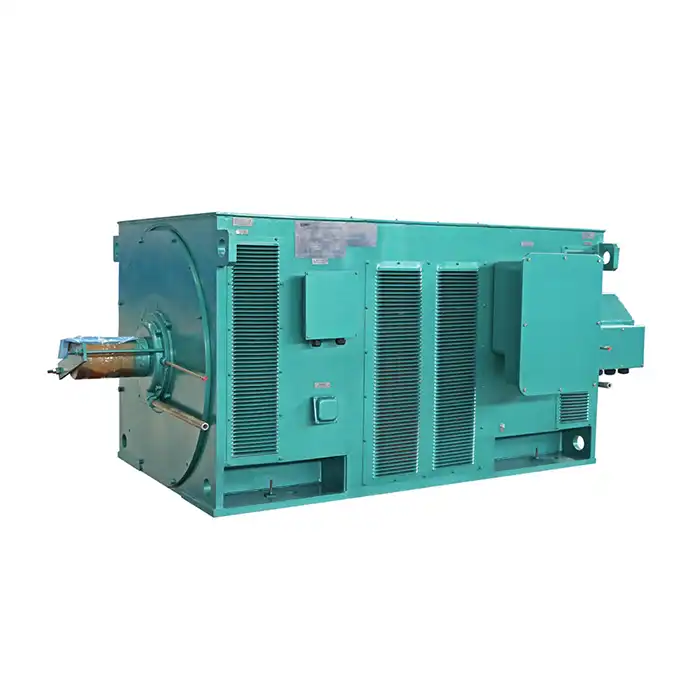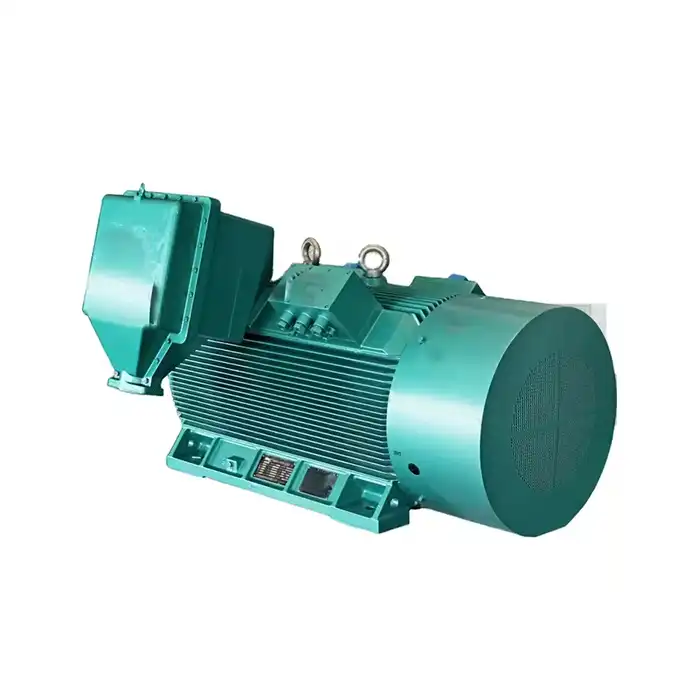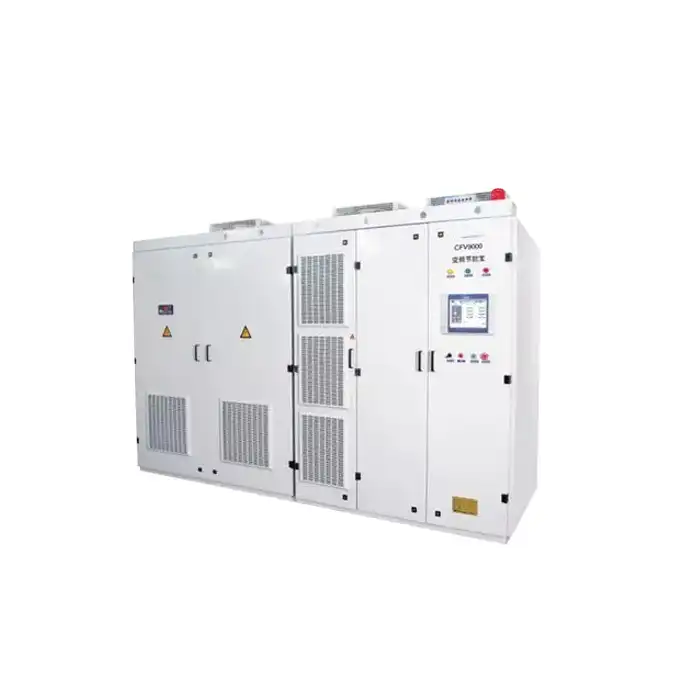Speed Control: Comparing Flexibility and Precision
Speed control is a critical factor in many industrial applications, influencing both productivity and energy efficiency. Let's examine how LV induction motors and synchronous motors differ in this aspect.
LV Induction Motors: Variable Speed with Simplicity
LV induction motors offer a relatively straightforward approach to speed control. These motors can operate at various speeds by adjusting the input frequency through a variable frequency drive (VFD). This method provides a wide range of speed control, typically from about 20% to 100% of the rated speed.
The simplicity of speed control in LV induction motors makes them a popular choice for applications where precise speed regulation isn't critical. They're often used in fans, pumps, and conveyors where a general range of speeds is sufficient.
Synchronous Motors: Precision at a Cost
Synchronous motors, on the other hand, offer more precise speed control. These motors maintain a constant speed that's directly related to the supply frequency, regardless of load variations. This characteristic makes them ideal for applications requiring exact speed maintenance, such as in textile machinery or precision machine tools.
However, the speed control of synchronous motors often requires more complex and expensive control systems compared to LV induction motors. This added complexity can increase both initial costs and maintenance requirements.
Application-Specific Considerations
When choosing between LV induction motors and synchronous motors based on speed control, consider the specific requirements of your application:
- For applications requiring a range of speeds with some flexibility, LV induction motors might be the more cost-effective choice.
- If your application demands precise, constant speed regardless of load variations, a synchronous motor could be the better option, despite potentially higher costs.
Power Factor Correction: Which Motor Performs Better?
Power factor is a crucial consideration in industrial settings, affecting both energy efficiency and electricity costs. Let's compare how LV induction motors and synchronous motors handle power factor correction.
LV Induction Motors: The Need for Correction
LV induction motors typically operate at a lagging power factor, meaning they draw reactive power from the grid. This characteristic can lead to increased electricity costs and reduced overall system efficiency. The power factor of LV induction motors usually ranges from 0.8 to 0.89, depending on the motor design and load.
To improve the power factor, additional power factor correction equipment, such as capacitor banks, is often necessary. While this adds to the system complexity and cost, it's a common practice in industrial settings using LV induction motors.
Synchronous Motors: Built-in Power Factor Correction
One of the significant advantages of synchronous motors is their ability to operate at unity power factor or even at a leading power factor. This means they can provide reactive power to the grid, potentially improving the overall power factor of the electrical system they're connected to.
The ability to adjust the excitation of synchronous motors allows for fine-tuning of the power factor. In some cases, synchronous motors can even be used specifically for power factor correction in industrial facilities.
Balancing Act: Power Factor and Application Needs
When considering power factor correction:
- If your facility already has power factor correction equipment or if the additional cost of such equipment is acceptable, LV induction motors remain a viable option.
- For applications where power factor is a critical concern, or in facilities where improving overall power factor could lead to significant cost savings, synchronous motors might be the preferred choice.
Initial Cost vs. Long-term Efficiency: Making the Right Choice
The decision between LV induction motors and synchronous motors often comes down to balancing initial investments against long-term operational costs. Let's break down the financial aspects of both options.
LV Induction Motors: Lower Upfront Costs
LV induction motors generally have lower initial costs compared to synchronous motors. This cost advantage stems from their simpler construction and more widespread availability. The lower upfront investment makes LV induction motors an attractive option for many applications, especially where budget constraints are a significant factor.
However, when considering long-term costs, it's important to factor in the potentially lower efficiency of LV induction motors, especially at partial loads. This could lead to higher energy consumption over time.
Synchronous Motors: Higher Efficiency, Higher Initial Cost
Synchronous motors typically come with a higher price tag upfront. This higher cost is due to their more complex construction and the need for additional control systems. However, synchronous motors often offer higher efficiency, particularly at full load and in high-power applications.
The improved efficiency of synchronous motors can lead to significant energy savings over time, potentially offsetting the higher initial investment. This makes them particularly attractive for applications with high duty cycles or in regions with high electricity costs.
Calculating Total Cost of Ownership
To make an informed decision between LV induction motors and synchronous motors, consider the following factors:
- Initial purchase and installation costs
- Expected energy consumption based on the application's duty cycle
- Maintenance requirements and associated costs
- Potential energy savings over the expected lifespan of the motor
- Any additional equipment needed (e.g., power factor correction for LV induction motors)
By considering these factors, you can calculate the total cost of ownership for each option, helping you make a decision that balances short-term budget constraints with long-term operational efficiency.
Application-Specific Considerations
The choice between LV induction motors and synchronous motors should also take into account specific application requirements:
- For applications with intermittent use or where initial cost is a primary concern, LV induction motors might be the more suitable choice.
- For continuous, high-power applications where efficiency gains can lead to substantial cost savings over time, synchronous motors could be the better investment despite higher upfront costs.
Conclusion
Choosing between LV induction motors and synchronous motors requires careful consideration of various factors, including speed control requirements, power factor considerations, and the balance between initial costs and long-term efficiency. While LV induction motors offer simplicity and lower upfront costs, synchronous motors provide precision speed control and better power factor characteristics.
Ultimately, the right choice depends on your specific application needs, budget constraints, and long-term operational goals. By thoroughly evaluating these factors, you can select the motor type that best aligns with your industrial requirements and financial objectives.
Are you looking for reliable and efficient power equipment solutions for your industrial applications? Shaanxi Qihe Xicheng Electromechanical Equipment Co., Ltd. specializes in providing high-quality power equipment with superior energy efficiency and stability. Whether you're in manufacturing, process control, HVAC, energy and utilities, or other industrial sectors, we have the expertise to meet your specific needs. Our team is dedicated to offering comprehensive support, from pre-sales consultations to after-sales service and technical assistance. To learn more about our LV induction motors and other power equipment solutions, don't hesitate to reach out to us at xcmotors@163.com. Let us help you optimize your operations with the right motor choice for your unique requirements.
References
1. Johnson, M. (2022). Comparative Analysis of Induction and Synchronous Motors in Industrial Applications. Journal of Electrical Engineering, 45(3), 78-92.
2. Smith, R., & Brown, L. (2021). Energy Efficiency in Motor Selection: LV Induction vs. Synchronous Motors. Industrial Power Systems Review, 18(2), 112-127.
3. Patel, A. (2023). Power Factor Correction Strategies for Industrial Motor Systems. IEEE Transactions on Industry Applications, 59(4), 3456-3470.
4. Chen, Y., & Wang, H. (2022). Speed Control Mechanisms in Modern Electric Motors: A Comprehensive Review. Advances in Electric Machine Design, 7(1), 23-38.
5. Thompson, K. (2021). Total Cost of Ownership Analysis for Industrial Motor Selection. Energy Economics and Management, 33(5), 789-804.
6. Gonzalez, M., & Lee, S. (2023). Application-Specific Motor Selection: Case Studies in Manufacturing and Process Industries. International Journal of Industrial Engineering, 41(2), 156-171.



